NIL
NIL in high school? Arizona's next
PHOENIX – In the evolving world of amateur sports, the three-letter acronym NIL has begun rewriting the rulebook.Short for name, image and likeness, this concept has opened the door for monetization at all levels of athletics. A financial revolution once seemingly only available for college athletes is now trickling down all the way to the […]


 PHOENIX – In the evolving world of amateur sports, the three-letter acronym NIL has begun rewriting the rulebook.Short for name, image and likeness, this concept has opened the door for monetization at all levels of athletics. A financial revolution once seemingly only available for college athletes is now trickling down all the way to the high school level. NIL is making its way into high school gymnasiums and fields with athletes across the U.S. growing their brand before stepping foot on a college campus.At the center of this shift in Phoenix is Zaire “Cherri” Hatter, a 14-year-old basketball star from Desert Vista High School who has already begun navigating the life of a high-profile athlete. Hatter is a representation of the new world of youth athletics – a world where Hatter can reach new heights while staying true to herself.It’s terrain University of Arizona basketball player Jada Williams knows well. She was among the first female high school basketball players to sign a national NIL deal when she was at La Jolla Country Day School in San Diego and continues to reap the financial benefits from companies including Spalding and Gym Shark.How we got hereTo better understand NIL’s rapid growth, we have to look back to the origin. At the start, collegiate athletes competed for either pride or scholarships. But as collegiate sports evolved into a multi billion-dollar industry over time, the model began to shift.Need a break? Play the USA TODAY Daily Crossword Puzzle.
PHOENIX – In the evolving world of amateur sports, the three-letter acronym NIL has begun rewriting the rulebook.Short for name, image and likeness, this concept has opened the door for monetization at all levels of athletics. A financial revolution once seemingly only available for college athletes is now trickling down all the way to the high school level. NIL is making its way into high school gymnasiums and fields with athletes across the U.S. growing their brand before stepping foot on a college campus.At the center of this shift in Phoenix is Zaire “Cherri” Hatter, a 14-year-old basketball star from Desert Vista High School who has already begun navigating the life of a high-profile athlete. Hatter is a representation of the new world of youth athletics – a world where Hatter can reach new heights while staying true to herself.It’s terrain University of Arizona basketball player Jada Williams knows well. She was among the first female high school basketball players to sign a national NIL deal when she was at La Jolla Country Day School in San Diego and continues to reap the financial benefits from companies including Spalding and Gym Shark.How we got hereTo better understand NIL’s rapid growth, we have to look back to the origin. At the start, collegiate athletes competed for either pride or scholarships. But as collegiate sports evolved into a multi billion-dollar industry over time, the model began to shift.Need a break? Play the USA TODAY Daily Crossword Puzzle.
In 2021, after years of legal battles among athletes and the courts, a landmark Supreme Court decision came in the NCAA vs. Alston case. As a result, the NCAA adjusted its rules to allow athletes to receive compensation through NIL deals.One level lower, discussions began around NIL and high school athletes. As of 2025, at least 42 states and the District of Columbia allow high school athletes to profit from NIL.Jon Kappes, an associate research professor at Arizona State’s Sandra Day O’Connor College of Law who recently hosted an event about NIL for young athletes, spoke to this and some of the risks that deals can pose in states where NIL is not permitted.“I am aware that different states have been slower to change the high school policies, which have in some instances said high school students can lose eligibility,” Kappes said.The Arizona Interscholastic Association officially approved NIL activity for high school students, allowing students the ability to profit under strict guidelines. Arizona’s high school students are prohibited from wearing school uniforms or logos or have any affiliation to the school in any NIL activities.“It has added another layer of support and education we need to make sure we address these student-athletes, we have to make sure they are aware of the AIA bylaws,” said Jared Walther, the assistant principal of activities at Desert Vista. “We educate our coaches with the bylaws and help them navigate it with the kids.”The support systemHatter’s emergence as one of the top high school athletes, and the top girls state basketball athlete in the class of 2028 has placed the freshman guard at the forefront of the Arizona NIL youth movement. Hatter is already in line for NIL opportunities while also fielding Division I offers from programs like Alabama and Maryland. She recalled her excitement when she received that first offer.“It was exciting, because it confirms that my hard work has paid off so far,” Hatter said. “I definitely still have a lot of work to keep getting better.”While she enjoys the spotlight at a young age, Hatter is fully aware of the responsibility that comes with being a high-level athlete. The pressure of living up to the hype comes with its own challenges, but she keeps her mind focused.“I still have three years left of high school, I am making sure I continue to get better each day,” Hatter said.Maintaining a positive mindset on and off the court at times can be tricky and hard to manage for young athletes. Having her mother by her side has been one of the keys in her success so far.With her mother working as an equipment manager for the Desert Vista team, the long afternoon sessions that extend into the evenings become easier with her mother’s sacrifices.
“It is a big time commitment, but I enjoy the process of juggling school, and basketball,” Hatter said.
Another piece of the puzzle is Desert Vista coach Erin O’Bryan, a former university of Arizona women’s basketball player, who understands Hatter is rare and provides guidance based on her own experiences.
“Cherri’s work ethic is unmatched, she puts in hours upon hours in the weight room, on the court, and in the training room. She is dedicated to becoming the best player she can,” O’Bryan said. “Cherri has a very high ceiling, and she has high expectations for herself. She could end up being the most highly sought after player in Arizona.”The praise is consistent among all coaches, friends and family, but the admiration does not change Hatter’s personality. O’Bryan mentioned that the era of NIL has not changed any team dynamics.Hatter’s acknowledgment extends beyond just the court for Walther, who sees how well she handles the pressure at her age.“For being only a freshman and having these expectations placed on her, she has gone with the flow and not let any of it disrupt her usual day to day life,” Walther said. “She continues to do well in the classroom even with her basketball responsibilities.”Beyond the courtThe pressure of NIL reaches beyond just the financial aspects and collegiate recruitments – they also influence mental health. The feeling of starting early and standing out can at times train kids to not only train to like professionals but seemingly market themselves like that as well.Lindsey Markwell, a lecturer at Arizona State University in the Movement Sciences Programs with expertise in sport psychology and mental performance, echoes those concerns.“When sport becomes the only thing a youth athlete does or the only thing others talk to them about it can lead to single-performance based identity,” Markwell said. “Their self-worth becomes tied to how well they perform.”In most cases, especially in Arizona, sports such as basketball are year-round due to school commitments and club or team commitments resulting in a situation where most do not get that break or that “offseason” away.In Hatter’s case, it is vital to her success to have a strong environment surrounding her to ensure the road trips or the early practices are possible, and the enjoyment of being a kid isn’t lost.Luckily for Hatter that is exactly what she has from her mom by her side, to her sister, to all coaches and teachers, everyone in Hatter life is there to support her and see her grow not just as an athlete but as a person.While the mental load for anyone at this age let alone a teenager is quite a lot, it is simply hard to put NIL or competitive sports at fault. For all athletes alike, positive mental health outcomes will always be possible when someone such as Hatter has the ability to be heard and feel valued past how they play on a given day.“When supported well, early commitment can build resilience, discipline, and confidence,” Markwell said. “Balance, autonomy, and having a voice in their schedule makes all the difference.”For Desert Vista girls basketball the show is not all just about Hatter instead she is the beacon that shines brightest for the team and inspires each person to give it their best. Ultimately, by serving as leader on the court, Hatter’s passion and love for the game echoes across the locker room and classroom.“Cherri gives our team confidence, she is reliable and plays well every time she steps on the court,” O’Bryan said. “She upholds the culture of toughness and winning.”A quick comparisonAs the spotlight continues to grow on young athletes such as Hatter, it is brought to question that what we’re witnessing isn’t entirely new – it just looks different. NIL, with the branding and pressure to perform mirrors some of the experience of the youth entertainment culture of child stars in Hollywood.“In terms of an age threshold, what comes to my mind is that this context of athletics and sports is not that different from young actors,” Kappes said. “So you’ve got child actors that are toddlers, that are babies, nine months old, two years old.”Like child actors, NIL athletes tend to be thrusted into adult conversations and spaces while still developing as a person mentally and emotionally. In a lot of situations they are learning to market themselves and perform under pressure before they can even legally drive a car.“Athletes are branding themselves at 14 or 15, constantly curating how they’re seen,” Markwell said. “That pressure to always perform – both in real life and online – is a lot for anyone, let alone a teenager.”Though unlike child stars in Hollywood, students like Hatter are expected to attend school, take tests and homework like everyone else and in some situations to a higher degree.When hearing from people close to her though, this is exactly what makes Hatter special — managing both lives – as a freshmen student and a high profile athlete. She is able to thrive as a person in the classroom and on the court.A new eraThe NIL era has unlocked untapped doors for young athletes to offer opportunities to profit from not only themselves but their passions. As time moves on, expectation starts to grow and the pressure to perform is more than just sport.“The first thing for a young person to look at: Do they want to be engaged in sanctioned high school athletics, or do they not,” Kappes said.

NIL
Highest-Paid College Football Players if NIL Existed Since 2000
The analysis explores how college football players would have financially benefited from Name, Image, and Likeness (NIL) deals had they been available since 2000. Writers ranked players like Johnny Manziel, Reggie Bush, and Tim Tebow based on their hypothetical NIL earnings, reflecting on the lucrative potential of their marketability. Manziel leads with an estimated $35 […]
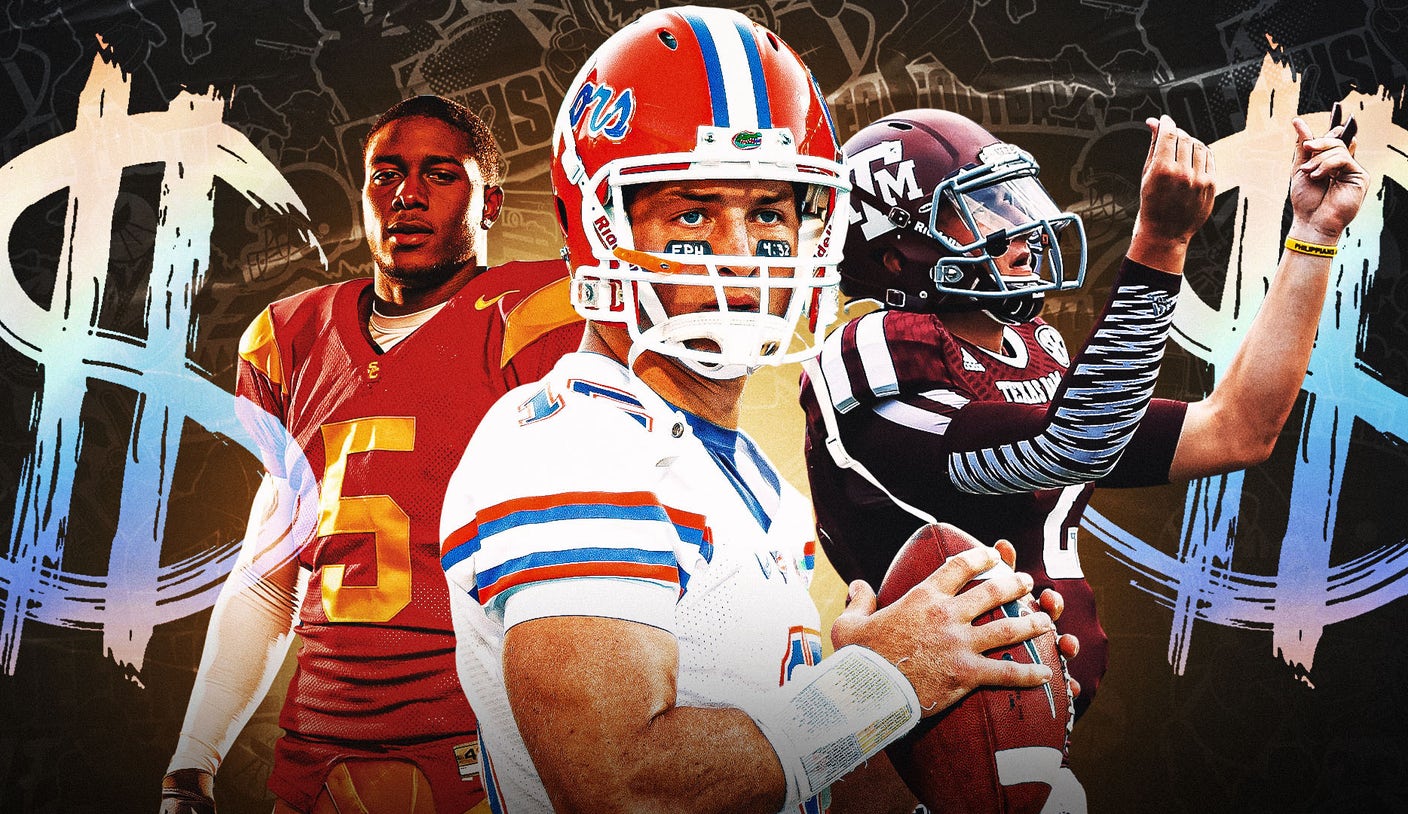
The analysis explores how college football players would have financially benefited from Name, Image, and Likeness (NIL) deals had they been available since 2000. Writers ranked players like Johnny Manziel, Reggie Bush, and Tim Tebow based on their hypothetical NIL earnings, reflecting on the lucrative potential of their marketability. Manziel leads with an estimated $35 million, followed by notable players such as Bush and Tebow, showcasing how the rise of NIL could have dramatically changed athletes’ financial landscapes. This retrospective illustrates the growing tensions between athlete compensation and traditional NCAA policies.
By the Numbers
- Johnny Manziel: $35 million
- Reggie Bush: $25 million
- Tim Tebow: $22 million
- Cam Newton: $20 million
- Vince Young: $15 million
Yes, But
There are contrasting views on whether NIL benefits would have truly leveled the playing field or just enhanced disparities among programs with existing resources. Some argue that while top-tier schools benefit more from these arrangements, lower-tier programs might struggle to compete for top talent.
State of Play
- NIL policies are now a game-changer in college athletics, allowing players to monetize their brand.
- The debate surrounding compensation in college sports continues to evolve as more athletes seek financial opportunities.
What’s Next
Future developments may involve more stringent regulations around NIL deals to address concerns regarding equity among athletes. Additionally, the impact of NIL on recruiting strategies and team dynamics is likely to reshape how colleges approach athletic programs.
Bottom Line
The exploration into past athletes’ potential NIL earnings underscores significant shifts in college athletics, highlighting how financial opportunities could redefine the landscape, empower athletes, and create lasting impacts on the NCAA’s structure.
NIL
Happy Hour: Opting in decision with AD Jon Schemmel – Sioux Falls Live
So, the South Dakota Coyotes will now get to pay athletes directly starting July 1, thanks to USD athletic director Jon Schemmel’s June 17 decision to “opt in” to the NCAA-House Settlement, allowing revenue sharing to athletes for the first time. How does it all work? How much money will there be to share with […]

So, the South Dakota Coyotes will now get to pay athletes directly starting July 1, thanks to USD athletic director Jon Schemmel’s June 17 decision to “opt in” to the NCAA-House Settlement, allowing revenue sharing to athletes for the first time.
How does it all work? How much money will there be to share with athletes this year? Which athletes get the money? How much do they get? What does this mean for the major boosters and those who want to contribute more mildly, either to the athletic department or the athletes directly?
Schemmel has the answers in a 73-minute conversation with Happy Hour host John Gaskins. He also addresses the well-publicized shot he took at Sacramento State’s president on social media last week, which leads to a conversation about USD’s desire to stay in the FCS versus the appeal, if any, of trying to move to the FBS like Sac State is attempting (and failing.)
Another major USD issue — attendance. Why does it lag so far behind rival SDSU in football and basketball, and what will it take from Schemmel and others at USD to narrow the gap?
Here is more detail about what you’ll find:
PART 1 – HOW WILL REVENUE SHARING WITH ATHLETES WORK?
Now that the school will be able to share revenue, how will NIL now work for USD athletes who want to make that? What does this mean for USD’s third-party NIL “collective” that was the source to (mostly) keep top athletes or lure in transfers?
How much will it help USD competitively — in recruiting and on the field? Will this stop or limit the transfer portal absurdity the Coyote football team fell victim to in the spring?
And, really, why wouldn’t a school like USD not “opt-in” to sharing revenue with athletes now that they know they won’t to have to make any roster cuts to current athletes? Why was this such a quicker (easier) decision for USD to make than it may be for SDSU and NDSU?
PART 2 – FCS vs FBS, FOOTBALL & BASKETBALL ATTENDANCE, JOHANSEN’S FIRST SIX MONTHS
It was the X (Twitter) shot heard ’round the FCS world last week.
Schemmel fired back at Sacramento State president Kevin Wood, who had publicly called FCS football — where the Hornets reside — “JV” football. When the FBS oversight committee recommended the NCAA to deny SCSU’s entry into the FBS (“varsity”) Schemmel posted something that became hot fodder for FCS enthusiasts:
“All of us JV programs are excited to compete against a varsity program!”
(Since then, the NCAA Div. I council officially denied SCSU’s attempt to enter the FBS on the basis it needed a conference affiliation, which it hasn’t found.)
Schemmel, who has led USD athletics for about 18 months, had no idea the kind of wildfire one public social media sentence would trigger. But he never took down the post and stood his ground in talking about the post in this interview.
This led to a discussion about USD’s desires, or lack thereof, to move from FCS — where the Yotes finished a national semifinalist in 2024 — up to FBS to have a (likely very long) shot of playing in the College Football Playoff and receiving the mother load of money that’d come with it.
Schemmel does not shy away from acknowledging where USD stands in FCS achievement, attendance, interest, and financial strength compared to the Coyotes’ two biggest rivals, and perennial powerhouses, SDSU and NDSU.
Why is there such a gap, and how does USD narrow it, particularly in drawing more fans (and revenue) to the major sports of football and basketball (men’s and women’s)?
Finally, Schemmel gives his assessment of first-year head football coach Travis Johansen’s navigation through spring practice and a transfer portal that plucked away several top players for far more NIL money at FBS schools— also an update on the retired Bob Nielson, who Johansen replaced.
FULL INTERVIEW with USD A.D. Jon Schemmel (Paying athletes, NIL future, FCS vs FBS, game attendance, Travis Johansen so far)
Wed Jun 25 17:03:00 EDT 2025
How does it all work? How much money will there be to share with athletes this year? Which athletes get the money? How much do they get? What does this mean for the major boosters and those who want to contribute more mildly, either to the athletic department or the athletes directly?
Schemmel has the answers in a 73-minute conversation with Happy Hour host John Gaskins. He also addresses the well-publicized shot he took at Sacramento State’s president on social media last week, which leads to a conversation about USD’s desire to stay in the FCS versus the appeal, if any, of trying to move to the FBS like Sac State is attempting (and failing.)
Another major USD issue — attendance. Why does it lag so far behind rival SDSU in football and basketball, and what will it take from Schemmel and others at USD to narrow the gap?
Here is more detail about you’ll find:
PART 1 – HOW WILL REVENUE SHARING WITH ATHLETES WORK?
Now that the school will be able to share revenue, how will NIL now work for USD athletes who want to make that? What does this mean for USD’s third-party NIL “collective” that was the source to (mostly) keep top athletes or lure in transfers?
How much will it help USD competitively — in recruiting and on the field? Will this stop or limit the transfer portal absurdity the Coyote football team fell victim to in the spring?
And, really, why wouldn’t a school like USD not “opt-in” to sharing revenue with athletes now that they know they won’t to have to make any roster cuts to current athletes? Why was this such a quicker (easier) decision for USD to make than it may be for SDSU and NDSU?
PART 2 – FCS vs FBS, FOOTBALL & BASKETBALL ATTENDANCE, JOHANSEN’S FIRST SIX MONTHS
It was the X (Twitter) shot heard ’round the FCS world last week.
Schemmel fired back at Sacramento State president Kevin Wood, who had publicly called FCS football — where the Hornets reside — “JV” football. When the FBS oversight committee recommended the NCAA to deny SCSU’s entry into the FBS (“varsity”) Schemmel posted something that became hot fodder for FCS enthusiasts:
“All of us JV programs are excited to compete against a varsity program!”
(Since then, the NCAA Div. I council officially denied SCSU’s attempt to enter the FBS on the basis it needed a conference affiliation, which it hasn’t found.)
Schemmel, who has led USD athletics for about 18 months, had no idea the kind of wildfire one public social media sentence would trigger. But he never took down the post and stood his ground in talking about the post in this interview.
This led to a discussion about USD’s desires, or lack thereof, to move from FCS — where the Yotes finished a national semifinalist in 2024 — up to FBS to have a (likely very long) shot of playing in the College Football Playoff and receiving the mother load of money that’d come with it.
Schemmel does not shy away from acknowledging where USD stands in FCS achievement, attendance, interest, and financial strength compared to the Coyotes’ two biggest rivals, and perennial powerhouses, SDSU and NDSU.
Why is there such a gap, and how does USD narrow it, particularly in drawing more fans (and revenue) to the major sports of football and basketball (men’s and women’s)?
Finally, Schemmel gives his assessment of first-year head football coach Travis Johansen’s navigation through spring practice and a transfer portal that plucked away several top players for far more NIL money at FBS schools. Also, an update on the retired Bob Nielson, who Johansen replaced.
NIL
Athletes First makes bold move to enhance college football presence
Athletes First already has some of the more renowned players in the NFL, not to mention a top-shelf coaching clientele that includes the likes of Ryan Day and Brian Kelly at the collegiate level as well as Matt LeFleur on the NFL side. Now, the organization is making multiple moves to wade deeper into college […]

Athletes First already has some of the more renowned players in the NFL, not to mention a top-shelf coaching clientele that includes the likes of Ryan Day and Brian Kelly at the collegiate level as well as Matt LeFleur on the NFL side.
Now, the organization is making multiple moves to wade deeper into college football.
Multiple sources tell FootballScoop that Athletes First has hired longtime top Notre Dame personnel executive Dave Peloquin as well as LSU’s Jordan Arcement to bolster their college sports division — specifically the company’s process of identifying potential prep and college players who project to potential top-tier college Name, Image and Likeness clients as well as NFL prospects.
The company has several notable NFL clients, including former Notre Dame All-America safety Kyle Hamilton as well as Dallas Cowboys quarterback Dak Prescott.
In a role that sources told FootballScoop essentially as as the company’s general manager of the collegiate division, Peloquin instantly brings wtih him almost a quarter-century work from his time at Notre Dame — spanning from his student-work as an undergraduate assistant.
Starting in Bob Davie’s Notre Dame Fighting Irish program, Peloquin is one of the rarest individuals in all of college football — his value extending through five full-time Notre Dame football coaches beginning with Davie, transitioning to Ty Willingham, Charlies Weis, Brian Kelly and, finally, in multiple roles for Marcus Freeman.
He was both retained by all those Irish coaches and turned down numerous job opportunities to head up personnel departments for several other Power Conference programs, including in the Big Ten and SEC.
Arcement steadily grew in LSU’s recruiting department since his arrival in Baton Rouge, Louisiana, in 2022, following work at the University of Virginia. Most recently, Arcement was LSU’s director of recruiting communications and external relations. He also has coached in the prep ranks and played collegiate football at Nicholls State (La.).
The moves from Athletes First signal the company’s willingness to try to be on the leading edge of ongoing changes in college athletics, specifically college football.
The House Settlement takes effect July 1, with Power Conference schools who opt in at the maximum amount able to share $20.5 million in revenue with student-athletes — almost overwhelmingly directing the majority of those funds to football players — annually and with built-in increases of 4% annually over the decade-long terms of the deal.
Additionally, NIL opportunities are still available for college athletes and increasingly more so for high school athletes. At the college level, as part of the House Settlement, all NIL deals valued at more than $600 must be ratified by third-party financial powerhouse Deloitte. Athletes First, like other powerful agencies in college and pro athletics, has long history in dealing with marketing arrangements — the types of which Deloitte is being asked to oversee in the House Settlement.
NIL
Did Will Wade, NC State basketball build a winning roster? Here are results from survey
Will Wade, the new head coach, has earned an “A” grade from 81% of surveyed fans for his offseason moves.Texas Tech transfer Darrion Williams is considered the most important addition and a potential ACC Player of the Year candidate.Concern remains about the center position after Paul Mbiya backed out of his commitment.N.C. State basketball will have […]
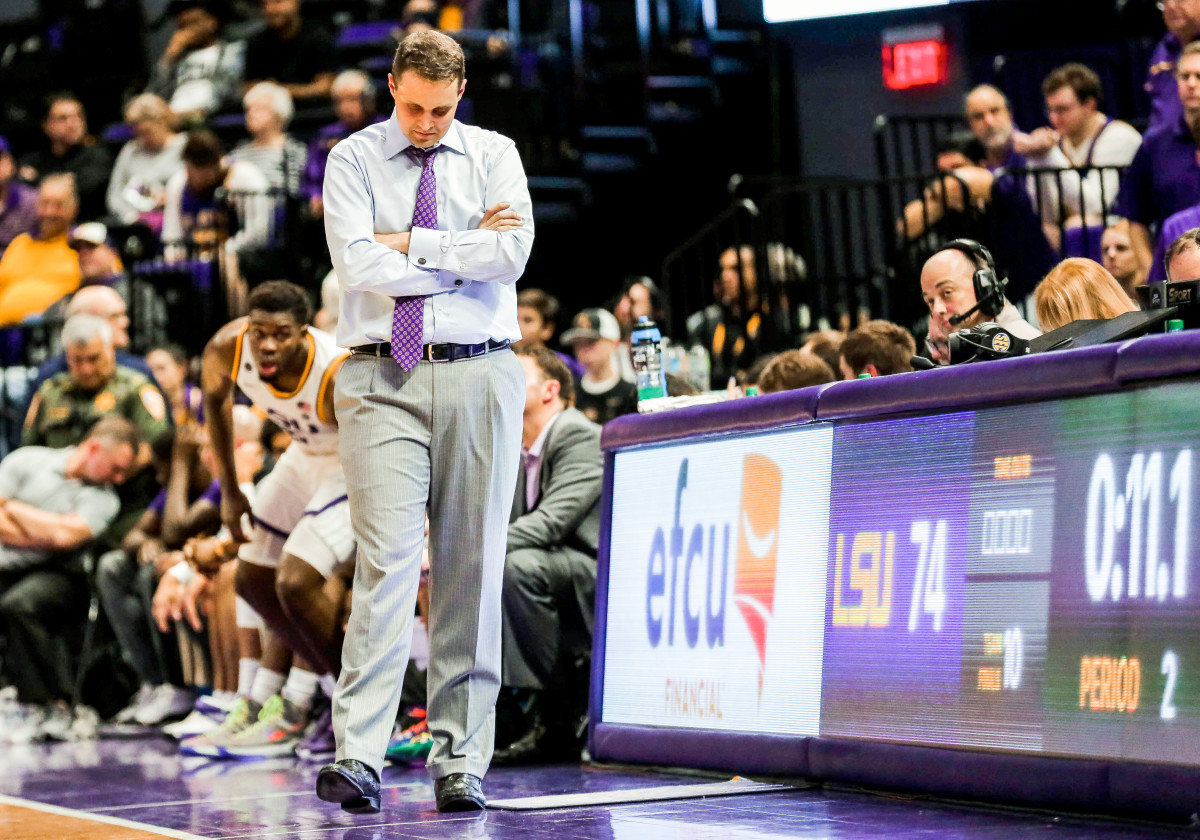
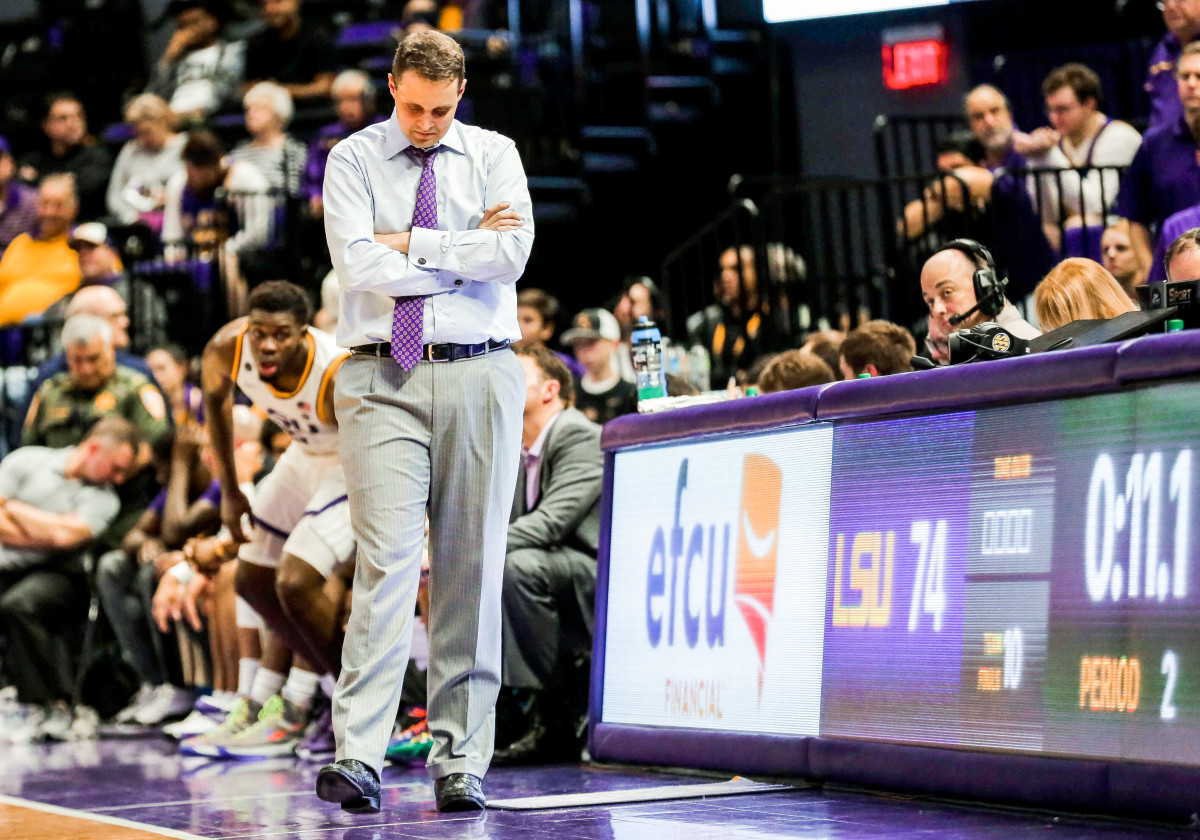
 Will Wade, the new head coach, has earned an “A” grade from 81% of surveyed fans for his offseason moves.Texas Tech transfer Darrion Williams is considered the most important addition and a potential ACC Player of the Year candidate.Concern remains about the center position after Paul Mbiya backed out of his commitment.N.C. State basketball will have a completely different look in the 2025-26 season.
Will Wade, the new head coach, has earned an “A” grade from 81% of surveyed fans for his offseason moves.Texas Tech transfer Darrion Williams is considered the most important addition and a potential ACC Player of the Year candidate.Concern remains about the center position after Paul Mbiya backed out of his commitment.N.C. State basketball will have a completely different look in the 2025-26 season.
The Wolfpack enters its debut season under head coach Will Wade with 12 newcomers, including eight players picked up via the transfer portal. Texas Tech’s Darrion Williams and Michigan State’s Tre Holloman are expected to be two of the top players for the Pack, which also added former UNC forward Ven-Allen Lubin.
N.C. State’s nonconference schedule includes Auburn, Kansas and a trip to Hawaii for the Maui Invitational. Arizona State, Texas, USC and Seton Hall are among the teams competing in that tournament.
Here’s a breakdown of results from a four-question survey that allowed fans a chance to voice their opinion on the Wolfpack’s offseason.
What grade do you give NC State basketball’s offseason?
The Wolfpack received an “A” on their offseason report card, according to 81% of voters in the survey, meaning Will Wade’s makeover for the Pack has received a big-time approval rating. More than 14% of voters gave N.C. State a “B” for the roster reload, which features one of the nation’s top transfer portal classes. ESPN has Wade’s latest additions ranked No. 13 in the country. It appears voters are confident that N.C. State will bounce back as an NCAA Tournament team in Wade’s debut season.
Darrion Williams voted NC State basketball’s most important newcomer
Texas Tech transfer Darrion Williams was one of the top transfer portal pickups this offseason, receiving 71% of the vote as the Wolfpack’s top newcomer. Williams has experienced sensational moments as an NCAA Tournament standout and could be the favorite to win ACC Player of the Year in his first season with the Pack. Freshman guard Matt Able was second with 8% of the vote. Michigan State transfer Tre Holloman and UNC transfer Ven-Allen Lubin also received votes.
Paul Mbiya backing out on Wolfpack gives reason for worry
More than 81% of voters are most worried about what N.C. State will look like at the center position this season. Freshman big man Paul Mbiya was positioned to be the top candidate as the Wolfpack’s primary rim protector this season before backing out of his commitment. Following Mbiya’s decision, N.C. State shifted its attention to former Wyoming center Scottie Ebube, who gives the program a 6-foot-10 center to play alongside undersized post players Ven-Allen Lubin and Jerry Deng.
Tre Holloman, Matt Able get vote of confidence as NC State guards
Looking at N.C. State’s guards, forwards and centers, voters are most confident in the Wolfpack’s group of guards (62%). That group includes Able and Holloman, along with sophomore returner Paul McNeil. Williams, Houston transfer Terrance Arceneaux and McNeese transfer Quadir Copeland are among the Pack’s top options at forward, which received 34% of the vote. Overall, N.C. State has good roster balance and a squad capable of vaulting the program back to the top of the ACC.
Rodd Baxley covers Duke, North Carolina and N.C. State for The Fayetteville Observer as part of the USA TODAY Network. Follow his ACC coverage on X/Twitter or Bluesky: @RoddBaxley. Got questions regarding those teams? Send them to rbaxley@fayobserver.com.
NIL
$1.1 million QB’s NIL agency confirms upcoming event with NFL presence
Before he stepped onto campus in Boulder as a member of the Colorado Buffaloes, class of 2024 quarterback Julian Lewis signed a groundbreaking deal with Athletes First, a sports agency. At the time, a senior at Carrollton (Ga.) High School, Lewis was one of the first athletes in the state of Georgia to be represented […]
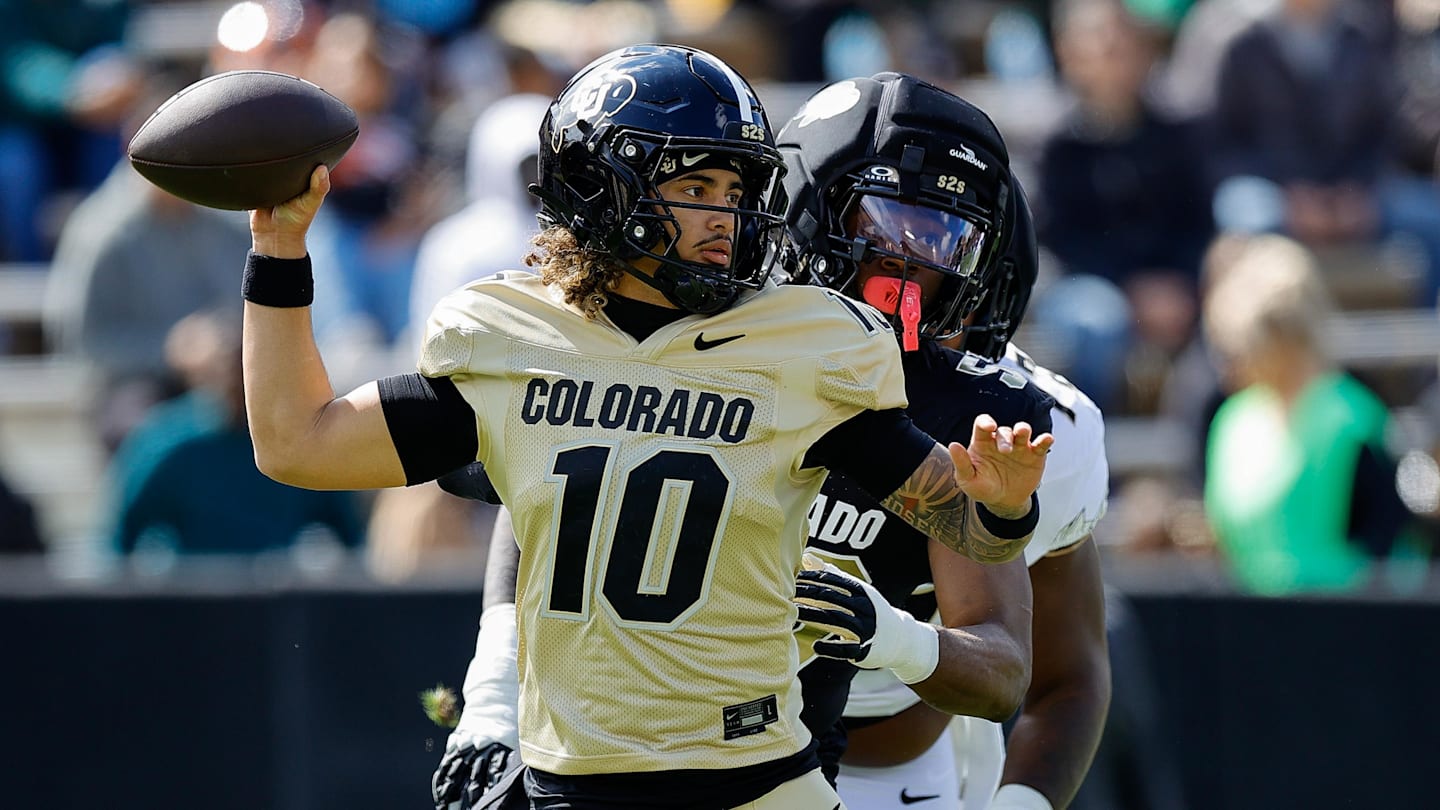
Before he stepped onto campus in Boulder as a member of the Colorado Buffaloes, class of 2024 quarterback Julian Lewis signed a groundbreaking deal with Athletes First, a sports agency.
At the time, a senior at Carrollton (Ga.) High School, Lewis was one of the first athletes in the state of Georgia to be represented by an agency after the Georgia High School Association changed its guidelines to allow high school student-athletes the ability to participate in NIL without losing their eligibility.
The move sent shockwaves through the high school sports landscape. The Los Angeles-based Athletes First agency is highly accredited as they represent a large number of NFL players that include Aaron Rodgers, Justin Herbert, Justin Jefferson and numerous other NFL stars.
Lewis, a five-star prospect and consensually rated as one of the top QB recruits in the 2024 class, was committed to the USC Trojans at the time of his signing.
Fast forward over a year and a half later and he’s competing for the starting job with the Buffaloes as a true freshman. Lauded for his accuracy, poise and arm strength, Lewis is on a favorable path to joining his fellow agency-mates in the NFL.
Speaking to the accredited nature of Athletes First, they began “an exclusive, three-day summit of NFL offensive linemen in Las Vegas spotlighting the strength, personality, and performance of the league’s best players at these positions,” a social media post wrote.
The event, titled “Big & Beautiful presented by BTL,” will be hosted and led by retired eight-time Pro-Bowler Tyron Smith with the help of Detroit Lions offensive tackle Penei Sewell, Dallas Cowboys offensive lineman Tyler Smith and Washington Commanders center Tyler Biadasz.
BTL Aesthetics, the brand presenting the event, will include its services surrounding physical and mental recovery in the Athlete Recovery Lounge.
Lewis already has an NIL valuation of $1.1 million thanks in part to Athletes First — a number that will more than likely grow with time on the field and with the help of an experienced, highly-regarded agency with strong NFL ties.
NIL
College basketball going to 32 regular season games, NCAA Tournament expansion likely – The Daily Hoosier
In the age of revenue sharing, college athletic departments need to find more ways to raise money. More games means more television revenue, and it seems we may be entering the era of more action on the courts and fields throughout the college landscape. One of the first signs of that came Wednesday, when CBS […]

In the age of revenue sharing, college athletic departments need to find more ways to raise money.
More games means more television revenue, and it seems we may be entering the era of more action on the courts and fields throughout the college landscape.
One of the first signs of that came Wednesday, when CBS Sports’ Matt Norlander reported the NCAA is expected to approve an expansion of the college basketball season from 31 to 32 games. Norlander says the move is being done to encourage even more high-profile nonconference games.
The change would go into effect with the 2026-27 season for men and women after the Division I Council passes the measure, per the report.
There has been a 31-game maximum since 2006-07. Teams are permitted to schedule 28 or 29 predetermined games, plus an allowance for multi-team events (MTEs) — such as holiday tournaments — where two or three additional games could be played.
The length of the season (early November to early March) is not expected to change, so more MTEs are likely coming.
According to the report, programs will not be required to play 32 games but will merely have the option to do so.
Norlander speculates in his report that this may just be the beginning of a movement towards a 34 or 35 game regular season over the next 10 years.
The longer seasons become, the less likely it is that any team will match Indiana’s perfect 32-0 season in 1976. That’s especially true if more challenging nonconference games become the norm.
Decision on NCAA Tournament expansion expected soon
The NCAA Tournament is likely to expand as well.
According to a report by ESPN’s Pete Thamel, the decision or whether to expand the NCAA men’s and women’s basketball tournaments for 2026 “is expected to come in the next few weeks.”
Thamel notes that the expansion would be to no more than 76 schools, which would be a maximum increase of eight new teams from the current format. He added that the NCAA remains engaged in talks with its media partners over any potential changes. Like the schedule expansion, the search for additional revenue is a factor. Tournament revenues are allocated back to the schools.
The last expansion to the NCAA Tournament field came in 2011. At that point, the field expanded from 64 teams to 68 teams.
The Daily Hoosier –“Where Indiana fans assemble when they’re not at Assembly”
Related
-

 Motorsports2 weeks ago
Motorsports2 weeks agoNASCAR Weekend Preview: Autódromo Hermanos Rodríguez
-

 NIL3 weeks ago
NIL3 weeks agoPatrick Mahomes in OKC for WCWS, praises NiJaree Canady and Texas Tech
-

 NIL3 weeks ago
NIL3 weeks agoGreg Sankey fires jab at obstruction rule after controversial WCWS call in Texas vs. Texas Tech
-

 Motorsports2 weeks ago
Motorsports2 weeks agoNASCAR Through the Gears: Denny Hamlin has gas, a border needs crossing, and yes, that’s a Hemi
-

 Health3 weeks ago
Health3 weeks agoBold and unapologetic
-

 Motorsports3 weeks ago
Motorsports3 weeks agoChase Elliott’s $12.6 billion backer made major Kyle Larson decision – Motorsport – Sports
-

 NIL3 weeks ago
NIL3 weeks agoShai Gilgeous
-
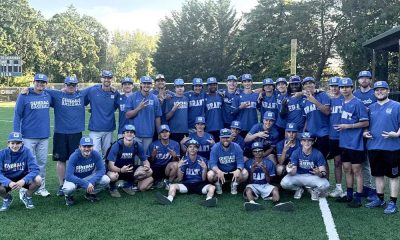
 Sports3 weeks ago
Sports3 weeks agoSummer baseball returns to Marion — and the field where the legendary Nolan Ryan got his …
-

 College Sports3 weeks ago
College Sports3 weeks agoWhat’s next for influencer Livvy Dunne after college gymnastics career? ‘Everything,’ she says
-

 Motorsports3 weeks ago
Motorsports3 weeks agoJudge rules against Michael Jordan’s team in NASCAR lawsuit – NBC Boston




































